How to stop rawl plugs from spinning around. Whether you’re putting up shelves, or curtain poles, you don’t want to screw it up, no pun intended. Some rawl plugs do anchor themselves to walls better than others.
How do you stop rawl plugs from spinning?
Rawl plugs spin because the drill hole is too big for the plug. The solution to avoid a rawl plug from spinning is to ensure the drill bit size corresponds to the rawl plag. If the hole has already been drilled into the wall, use a larger rawl plug, and possibly a larger screw.
Having the right rawl plug (Link to Amazon) can make the installation of curtain poles, putting up a picture, or hanging anything very easy. It’s important to understand which drill bit to use for your rawl plug. It’s also important to understand which rawl plug to use depending on your wall and what you are putting up.
How Do You Use Rawl Plugs & Avoid Spinning?
Different size rawl plugs and screws fulfill different purposes. larger, thicker screws are generally used to anchor things that need to carry more weight. The size of the screw will determine the size of your rawl plug.
Get the right rawl plug size to avoid spinning. Screw size given in diameter.
- 5 mm Rawl Plugs (use for screw sizes 2.5-4.2 mm)
- 6 mm Rawl Plugs (use for screw sizes 3.5 – 4.8 mm)
- 7 mm Rawl Plugs (use for screw sizes 4.2 – 6.3 mm)
- 10 mm Rawl Plugs (use for screw sizes 6.3 – 8 mm)
You can see from above you have a bit of flexibility when it comes to the rawl plug you choose. What’s great about this is that if you drill a hole that is slightly too large, you can use a larger rawl plug if necessary and potentially the same screw.
The screws sizes are written in terms of the diameter, i.e. the thickness of the screw. Use your screw length as a guide in buying longer or shorter plugs as required.
Why Do You Need Rawl Plugs?
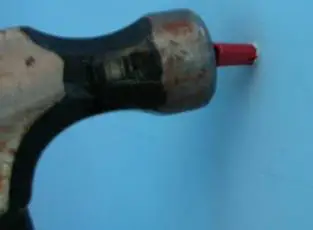
Rawl plugs provide additional grip for screws in a wall. They have a thread to compliment the screw thread and give it an additional grip. They work to stop a screw from coming out of a wall after you install it.
Larger screws for brick known as anchor screws, do not need rawl plugs because they create a thread as you screw them in. You will usually need a drill to drive the screw in.
When it comes to different Rawl plugs it’s useful to understand the different types. I’m personally a fan of Universal Rawl Plugs (Link to Amazon) because you can use them across multiple surfaces. That being said – let’s say you order a flat-pack self-assembly item that already comes with wall/rawl plugs – It’s useful to know its uses and limitations.
Different types of Rawl Plug
So now you’re familiar with the sizes of rawl plug that you should be using and the flexibility that you have when choosing one.
Depending on wall that you are drilling into some rawl plugs have a better grip than others.
Generally speaking, there are three types of rawl plugs. Wing tipped plugs, straight-edged plugs, and universal rawl plugs which as basically a hybrid of the two.
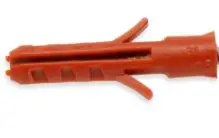
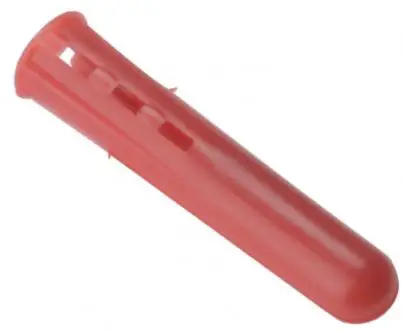

The wing-tipped plugs are designed to give the rawl plug more grip and are generally used with plasterboard, ‘Hollow Walls’. The straight-edged wall plugs are better for solid walls. Universal Rawl Plugs can be used for both wall types.
Where possible I tend to use wing-tipped rawl plugs or universal rawl plugs, just for the additional grip.
The rawl plugs you get with fixtures and fittings can be good, but also can be of poor quality. Don’t get me wrong, they can work fine, but my advice is that if you have better quality rawl plugs at home, use them instead, to ensure you can get the job done quickly.
Pulling out Rawl Plugs – Deciding Whether to Leave or Remove them
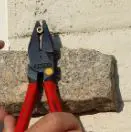
If you are pulling out a rawl plug because you need to replace it with another screw for a fixture or fitting you have a few options.
Pulling a rawl plug out of a wall
- You can wind a screw into the rawl plug about halfway should be fine. Then use a claw hammer or a pair of pliers to pull it out.
- If your rawl plug is stuck in a wall, you can drill it out using a masonry drill bit. Note you will need to use a larger rawl plug after you take it out in this instance.
If you do not intend to re-use the rawl plug, but you want to fillin the hole you can either
- leave the rawl plug in there and fill it in or
- take the rawl plug out and fill it in
I personally prefer to take the rawl plug out, especially if you are painting your walls. The reason being is that when you fill it, more often than not you tend to see the outline of the rawl plug in the wall, which is not very attractive.
Alternatively, if you are intending on wallpapering, or tiling your wall- there’s no point in removing the wall plug. Just fill it in. Nobody is going to see it anyway. Although it’s a small hole, leaving the raw plugin there with filler also prevents any further damage to the wall as well.
Removing a Rawl Plug With a Broken Screw or Worn out Head

If your screw is broken or the head is worn out, it can be a frustrating task when taking it out. It’s often a time when you ask yourself, why me?? – and nearly always happens when you don’t want it to.
Don’t worry yourself though – if often very fixable if you take the following steps.
If the screw is broken in the rawl plug:
- drill a small hole directly next to the screw with a nail size drill bit ( as thin as possible really). You may need to drill a couple of holes
- Using a nail, tap into the wall with a hammer and then nudge the screw out, and that’s it, you are back. Easier said than done I know
- Then use a masonry drill bit (if its a wall) to drill out the rawl plug and replace it.
If the screw head is worn out, then do the following:
- Try pulling the screw out with pliers or a claw hammer if you can first.
- If this does not work, then using a drill, take the same approach as when your screw is broken as mentioned above.
Having a good quality drill really helps drilling the correct hole in the first place. I have a Bosch Drill that I’ve owned now for over 4 years. My favourite feature is the ability to switch between drill bits and the ‘impact-drilling’ feature with ease.
In my post on drills, which you might find useful if you are looking to buy one, I go through important features I look out for as my top picks of what’s currently available.
How do you fix a screw that keeps coming loose?
There are a few things you can do to fix a screw that keeps coming loose, depending on whether the screw is in wood or Brick.
If The Screw Is In Brick and Keeps Coming Loose
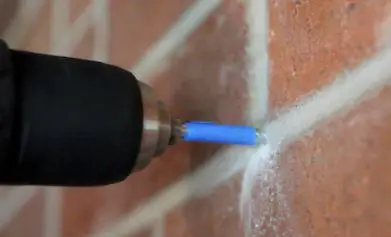
If the screw is in brick and loose, the best thing to do first is to remove the screw and replace it with a larger rawl plug. If you cannot use the same size screw, replace it with a larger one. If you are having trouble removing the screw, try using a pair of pliers.
if you are having a particularly difficult time taking the screw out, you may need to drill through it, be sure to use a metal drill bit bigger than the screw
If The Screw Is In Wood and Keeps Coming Loose

with no rawl plug, you can do one of two things. if the screw is slightly loose, you could put some super glue around the thread of the screw and put it back quickly, this could fix the issue.
Alternatively, if the screw is very loose, you could drill an additional hole. Put in a wooden dowel, with some glue. Once dry, you can take another screw, and then the screw should go in tight.
In Summary…
I hope that this article helped answer any questions you gave on rawl plugs.
The great thing about rawl plugs is their flexibility across different screw sizes. If you drill a hole that’s slightly too big, the chances are you can put in a larger rawl plug and still use the same screw which is always a bonus.
Rawl plugs may seem like a small detail when it comes to assembling anything, but they can make your job considerably longer than it needs to be if you don’t get it right.

